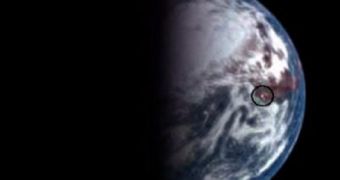At this point, looking for Earth-like exoplanets is a very cumbersome task. The regular processes used to detect other planets, such as measuring the variations in a parent's star brightness, become rather difficult to apply when that celestial body is millions to billions of light-years away. But some researchers propose that a simpler method exists, namely looking for possible glints, or reflections on these bodies' surfaces. They argue that light reflecting on oceans or lakes of various liquids can be picked up by special telescopes more readily that brightness variations can, Space reports.
Admittedly, the method carries a considerable risk of identifying oceans made of stuff other than water. But if there is any chance of a watery world being discovered, experts say, then it should be jumped at. This chemical is considered to be the basic requirement for the emergence and development of life on any celestial body, and finding even a small lake on an exoplanet would put that object at the top of the priority list of any self-respecting space agency.
In images sent back by the NASA Deep Impact spacecraft, it is revealed that our planets' glints are visible even from a distance of around 11 million miles, or 17.7 million kilometers. Researchers say that a certain alignment between the Sun, Earth and the spacecraft needs to occur, in order for the glints to become visible, and suggest that only water and ice are reflective enough to create these flashes of light. They go on to say that the surface of land masses, regardless of composition, is too rough to allow for such optical effects. Naturally, if an exoplanet is covered in crystals, it may glint even more obvious than the Earth does, some could argue.
“These Sun glints are important because, if we saw an extrasolar planet which had glints that popped up periodically, we would know that we were seeing lakes, oceans or other large bodies of liquid, such as water. And if we found large bodies of water on a distant planet, we would become much more optimistic about finding life,” researcher Drake Deming, from the NASA Goddard Space Flight Center (GSFC), in Greenbelt, Maryland, argues. He is also the deputy principal investigator of the Extrasolar Planet Observations and Characterization (EPOCh) project. Another GSFC researcher, Richard K. Barr, says that the first photos sent back by Deep Impact amazed researchers with the clarity and precision of the glints they contained.

 14 DAY TRIAL //
14 DAY TRIAL //